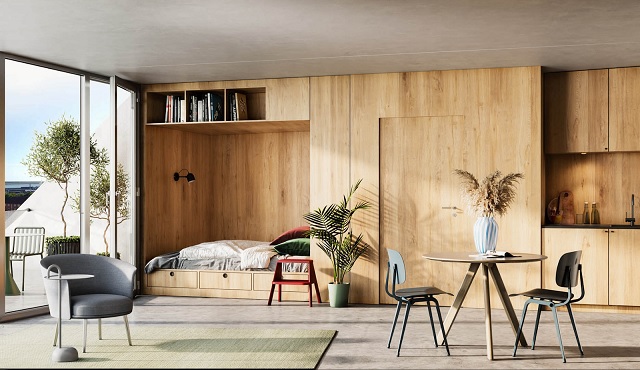In the realm of design and architecture, the journey from conceptualization to realization is a complex and intricate process. As technology continues to evolve, 3D visualization services have emerged as a powerful tool that revolutionizes the way designers and architects bring their ideas to life.
This article delves into the transformative role of 3D visualization services in the design and architecture industries, exploring their impact on creativity, communication, and the overall design process.
Understanding 3D Visualization Services
1. Defining 3D Visualization
At its core, 3D visualization is the process of creating three-dimensional representations of objects or scenes. In the context of design and architecture, this technique involves transforming 2D drawings or conceptual ideas into lifelike, immersive visualizations. This goes beyond traditional 2D drawings and blueprints, offering a more dynamic and realistic way to showcase designs.
2. Types of 3D Visualization Services
a. Architectural Visualization
Architectural visualization focuses on creating realistic depictions of buildings, interiors, and landscapes. Check out here it allows architects to present their designs in a visually compelling manner, helping clients and stakeholders better understand the proposed structures.
b. Interior Design Visualization
For interior designers, 3D visualization is a game-changer. It enables them to showcase how different elements such as furniture, lighting, and color schemes will come together in a given space. Clients can virtually walk through spaces before any construction begins.
c. Product Design Visualization
In product design, 3D visualization aids in the creation of realistic prototypes and simulations. Designers can visualize how products will look and function in the real world, making necessary adjustments before moving to the production phase.
The Impact on Creativity
1. Enhanced Design Exploration
With 3D visualization, designers and architects can explore a myriad of design possibilities. The ability to quickly visualize and iterate on ideas in a three-dimensional space fosters creativity and innovation.
This iterative process allows for the refinement and improvement of designs before final decisions are made.
2. Freedom from Traditional Constraints
Traditionally, designers were limited by the constraints of 2D representations. 3D visualization liberates design thinking from these constraints, offering a more accurate representation of spatial relationships and proportions.
This newfound freedom encourages out-of-the-box thinking and pushes the boundaries of what is possible in design and architecture.
Facilitating Effective Communication
1. Client Collaboration and Approval
One of the significant challenges in design and architecture is effectively communicating ideas to clients. 3D visualization services bridge the communication gap by providing clients with a realistic preview of the final product. This visual clarity reduces misunderstandings and increases client satisfaction, as they can make informed decisions based on a clear understanding of the design.
2. Streamlining Team Collaboration
In architectural and design firms, collaboration is key to successful project execution. 3D visualizations serve as a common ground for architects, designers, and other stakeholders to align their visions.
This shared understanding streamlines the collaboration process, resulting in more efficient project workflows.
Revolutionizing the Design Process
1. Early Detection of Design Flaws
Traditional design processes often led to the discovery of design flaws during the construction phase, causing delays and budget overruns. 3D visualization allows for early detection of issues such as spatial conflicts or design inconsistencies, minimizing the likelihood of costly revisions during construction.
2. Cost and Time Efficiency
The integration of 3D visualization in the design process contributes to significant cost and time savings. By addressing potential problems early on and reducing the need for design revisions, projects can move more swiftly from concept to completion. This efficiency benefits both designers and clients alike.
Overcoming Challenges in Implementation
1. Technological Barriers
While the benefits of 3D visualization are clear, the implementation can be hindered by technological barriers. Not all design and architectural firms may have the necessary software, hardware, or expertise to fully leverage 3D visualization. Overcoming these barriers requires investments in training and technology infrastructure.
2. Integration with Traditional Methods
Integrating 3D visualization with existing design processes can be challenging. Designers and architects accustomed to traditional methods may resist the transition to a more digital workflow.
Successful implementation involves gradual integration, training programs, and highlighting the tangible benefits of 3D visualization.
The Future of 3D Visualization in Design and Architecture
1. Advancements in Virtual and Augmented Reality
The future of 3D visualization in design and architecture is closely tied to advancements in virtual and augmented reality (VR and AR).
These technologies offer even more immersive experiences, allowing clients to virtually walk through spaces or interact with products in a simulated environment.
2. Artificial Intelligence in Design Assistance
As artificial intelligence (AI) continues to evolve, it is likely to play a significant role in design assistance. AI algorithms can analyze vast amounts of data and user preferences, providing designers with insights that can inform and enhance their creative process.
Conclusion
In conclusion, the transformative role of 3D visualization services in design and architecture cannot be overstated. From enhancing creativity to facilitating effective communication and revolutionizing the design process, 3D visualization has become an indispensable tool for professionals in these industries.
As technology continues to advance, the future promises even more exciting possibilities, shaping the way designers and architects bring their concepts to reality. Embracing these advancements will not only lead to more efficient workflows but also result in more innovative and visually stunning designs.

